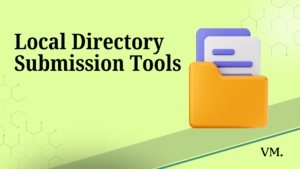Marketers, website managers, and digital entrepreneurs are turning to AI tools not just for speed, but for SEO gains, audience engagement, and ultimately, greater digital earnings. Here’s what’s working right now-based on real user demand, trending questions on Quora and Reddit, and the latest tool reviews.
The Top AI Content Creation Tools in 2025
| Tool | Best For | Key Strengths | Typical Use Cases |
|---|---|---|---|
| ChatGPT | General writing & brainstorming | Natural language, versatility, and creative prompts | Blog posts, social media, email, Q&A |
| Writesonic | SEO blog & marketing content | SEO optimization, blog/article templates | Long-form blogs, ad copy, web content |
| Jasper | Brand-aligned, scalable content | Advanced features, tone customization, and collaboration | Website copy, campaigns, scaling output |
| Rytr | Quick, short-form content | Templates, multilingual, plagiarism checker | Product descriptions, emails, and snippets |
| Frase | SEO-driven research & outlines | Topic research, competitor analysis, SERP insights | Content briefs, outlines, and optimization |
| Narrato | Content repurposing | Multiformat conversion, workflow automation | Blogs to social, video, and summaries |
| Synthesia | AI video from text | Video creation, avatars, and multilingual support | Explainers, video blogs, ads |
| Pictory AI | Text-to-video for social sharing | Short-form video, script conversion | Reels, shorts, social video |
The Current State of AI Content Creation
The AI content creation ecosystem has matured significantly since the early 2020s. We’ve moved beyond the initial wave of excitement to a more nuanced understanding of where AI truly adds value. Today’s successful digital entrepreneurs are using AI not to replace human creativity but to amplify it – focusing on tools that enhance productivity, personalization, and performance.
What’s New and Pressing in 2025?
- SEO Is Now AI-First: Tools like Frase, Clearscope, and SurferSEO help you analyze SERPs, automate keyword research, and optimize content for Google’s evolving algorithms, including Answer Engine Optimization (AEO).
- Content Repurposing Is Essential: AI platforms such as Narrato and Synthesia convert blogs into videos, podcasts, and social posts, maximizing reach and engagement across channels.
- Prompt Engineering Is a Must-Have Skill: Crafting specific, goal-oriented prompts is now critical for getting high-quality, on-brand output from AI tools.
- Human-AI Collaboration Wins: The best results come from blending AI-generated drafts with human editing for accuracy, brand voice, and unique insights.
- Performance Tracking Drives Iteration: Successful creators track metrics (engagement, conversions, rankings) on AI-generated content to refine prompts and strategies.
Top AI Tools for SEO Writing in 2025:
- SurferSEO AI – Auto-optimizes blog posts based on what’s ranking in real time.
- Jasper AI’s SEO Mode – Generates optimized long-form content that aligns with Google’s latest ranking signals.
- NeuralText – Combines keyword clustering, competitor analysis, and AI-driven copywriting.
Why It’s Effective:
Without SEO, content is useless. These tools don’t just write—they analyze. They tell you what to say and how to say it to get clicks.
Real, Usable Tactics for 2025
- Use AI for SEO-Optimized Content at Scale
Writesonic and Jasper generate blog posts and landing pages optimized for target keywords, meta tags, and structured data, helping you rank faster and with less manual effort.
- Repurpose Content Automatically
Narrato and Synthesia let you turn a single blog post into a week’s worth of social media updates, short-form videos, and email newsletters-saving time and boosting reach.
- Grab Attention with AI-Generated Hooks and Visuals
AI tools can generate multiple headlines and hook variations, test emotional resonance, and even suggest trending hashtags for social media. Combine this with Pictory AI and Synthesia to create eye-catching video content.
- Automate Research and Outlining
Frase and Clearscope analyze top-performing competitors, extract key topics, and build outlines that address user intent-giving you a head start on every article.
- Ensure Consistency and Originality
Rytr’s plagiarism checker and Quillbot’s paraphrasing features help keep your content unique and on-brand, even when producing at scale.
Best Practices for AI Content Creation in 2025
- Develop Detailed Content Briefs: The more context you give your AI, the better the output. Specify audience, tone, structure, and keywords.
- Master Prompt Engineering: Break tasks into clear, actionable prompts. Use examples and specify style, length, and goals.
- Always Review and Edit: AI drafts need human oversight for accuracy, compliance, and brand alignment.
- Track and Optimize: Use analytics to see what content performs best, then refine your prompts and strategies for even better results.
AI Writing Assistants:
ChatGPT-4 Turbo (with Custom GPTs)
- Why it works: You can train it on your voice, niche, and style.
- Tangible use: Create outlines, first drafts, headlines, email sequences at scale.
What changed in 2025: You can now upload brand guidelines, writing samples, and custom data.
Claude 3 Opus
- Why it works: Long-context understanding. You can feed it your entire blog database and get a deep audit.
Use case: Rewriting and updating massive knowledge bases, like FAQ sections, without sounding robotic.
AI Video Creation (Shorts, Reels, Ads):
Pika Labs 2.0
- Why it works: Text-to-video AI that makes real promotional shorts, product demos, and ad creatives.
Practical tip: Combine with short, SEO-optimized hooks from Jasper or ChatGPT for 15-30 second lead-generation videos.
Runway Gen-3
Why it works: AI-generated video clips you can fully control — used in viral ads and social content.
InVideo AI
Use case: Mass-production of video explainers for blog posts (great for rich media SEO).
AI for Visuals (Thumbnails, Blog Images, Ad Creatives):
Midjourney V6
- Why it works: Realistic, high-quality, non-stock looking images that grab attention.
Real hack: Use specific prompts to generate “human stock photos” that bypass ad fatigue and content blindness.
Canva AI Magic Media
- Use case: Instant branded graphics and social post repurposing.
Why it’s necessary: Speeds up your content pipeline so you stay ahead.
Content Planning and Keyword Research:
Keyword Insights 2.0
- Why it works: Cluster keywords into full blog content maps automatically — based on search intent.
Pro tip: Build topical authority much faster than traditional manual mapping.
AlsoAsked.com (with AI expansion)
- Use case: Find PAA (People Also Ask) questions and build SEO silos.
New 2025 feature: AI suggestion tree expands into sub-questions, perfect for FAQ optimization.
What People Are Asking (and Clicking) on Quora & Reddit
- “What’s the best AI tool for SEO blog writing in 2025?”
- “How do I use AI to repurpose my content for social media?”
- “Which AI tools help with content research and competitor analysis?”
- “How do I make AI-generated content sound more human?”
- “What are the best practices for prompt engineering?”
These questions are getting hundreds of answers and clicks-because creators, marketers, and entrepreneurs are all looking for ways to work smarter, not harder, and to stay ahead in a fiercely competitive digital world.
Wrapping It Up
In 2025, the winning formula for content creation is a blend of the right AI tools, sharp prompt engineering, and human creativity. Whether you’re managing a website, scaling your SEO, or building digital income streams, these tools and tactics aren’t just hype-they’re what’s actually working for top earners and attention-grabbers right now.
FAQ
AI content tools have improved dramatically since 2023-2024. The key advances include better understanding of nuanced writing styles, significantly reduced "AI detection" signatures, more accurate predictive analytics for content performance, and superior integration capabilities across marketing stacks. Most importantly, today's tools focus more on enhancing human creativity rather than replacing it.
Yes, but with strategic implementation. Small businesses should focus on AI tools that address specific pain points rather than adopting comprehensive suites. Research and SEO optimization tools typically offer the best initial ROI, while full content generation often requires more expertise to implement effectively. Start with one area where you're spending the most time manually.
The current leaders are BuzzSumo AI, ContentRadar, and TrendHunter Pro. These platforms analyze early signals across social platforms, forums, and search data to identify topics in the early growth phase. ContentRadar has the strongest predictive capabilities for technical and B2B topics, while BuzzSumo AI performs better for consumer and lifestyle content.
The accuracy has improved significantly, with top tools now achieving about 80-85% precision in identifying valuable content opportunities. The most reliable platforms combine traditional keyword gap analysis with user intent modeling and competitor content performance data. MarketMuse, Clearscope, and Semrush's Content Marketplace have the strongest track records for ROI on content gap recommendations.
Search engines don't explicitly penalize AI content, but they increasingly favor content with clear expertise, originality, and depth—qualities that fully AI-generated content often lacks. The most successful approach uses AI for research and editing while keeping human expertise central to the actual writing process. Content that appears templated or lacks original insights still underperforms regardless of how it was created.
In 2025, the most natural-sounding AI writing comes from tools that focus on editing and enhancing rather than full generation. EditGenius, ProsePolish, and JasperPro lead in producing natural-sounding content because they're designed to maintain human voice while improving structure and clarity. For specialized industries, vertical-specific tools like MedWriter (healthcare) and FinCopy (financial services) produce more authentic content.
The most effective approach combines several strategies: start with original research or unique perspectives that only you can provide, use AI to help structure and refine your ideas rather than generate them, customize AI outputs extensively, and maintain a consistent brand voice guide that AI tools can reference. Tools like ContentUnique and OriginalityAI also help identify potentially derivative sections in your content.
Modern AI SEO tools have shifted from keyword-focused approaches to comprehensive intent modeling. They now analyze SERP features, user engagement metrics, and competitive positioning alongside traditional keyword data. The most advanced platforms like RankScience and SEO Copilot Pro use predictive modeling to anticipate algorithm changes based on early signals from search results, giving users a 2-4 week advantage in optimization strategies.
Yes, but with limitations. Current AI tools excel at identifying gaps in expertise signals and suggesting structural improvements to demonstrate authority. However, they can't create genuine expertise where none exists. The most effective tools scan your content for claims that need substantiation, suggest areas where personal experience would strengthen the content, and analyze how thoroughly you've covered topics compared to recognized authorities in your space.
For marketing-specific imagery, DALL-E 5 Pro, Midjourney Enterprise, and Adobe Firefly lead the market in 2025. These platforms excel because they offer brand consistency features, commercial usage rights, and integration with marketing platforms. Adobe Firefly has the strongest advantage for maintaining brand consistency, while DALL-E 5 Pro excels at generating images optimized for conversion based on historical performance data.
The most effective approach is to use AI platforms that offer brand training capabilities. Tools like Midjourney Enterprise and Adobe Firefly allow you to upload brand assets and style guides to create a custom model that generates on-brand imagery. For platforms without these features, create detailed prompt templates that include consistent brand descriptors, color codes, and style references.
ContentIQ, Predictive Analytics Pro, and HubSpot's Content Strategy tools currently offer the most accurate performance predictions. These platforms analyze historical performance across your content library, competitor performance, and current market trends to forecast how new content will perform. ContentIQ has shown the strongest correlation between predictions and actual performance for SEO outcomes, while HubSpot's tool performs better for conversion-focused predictions.
AI distribution tools now focus on channel-specific customization and timing optimization. Platforms like OmniContent automatically adapt core content for different platforms (adjusting length, format, and tone), while timing intelligence systems analyze user engagement patterns to recommend optimal publishing schedules for different audience segments. The most significant improvement is in micro-audience targeting, where AI identifies specific interest groups within broader demographics.
Subscription models and targeted affiliate marketing currently show the strongest performance with AI-assisted content. AI excels at creating consistent, audience-specific content that builds loyalty over time, making it well-suited for subscription offerings. For affiliate marketing, AI tools can analyze purchase patterns to identify the most profitable product recommendations for specific content topics and audience segments.
Track specific metrics before and after implementation, focusing on both efficiency and effectiveness. On the efficiency side, measure time saved in research, writing, and optimization. For effectiveness, track content performance improvements in rankings, traffic, engagement, and conversions. The most accurate ROI calculations also factor in opportunity cost—what other high-value activities your team accomplished with the time saved from AI automation.
Start with a workflow audit to identify bottlenecks and low-value tasks that consume disproportionate time. Implement AI tools incrementally, beginning with research and optimization before moving to generation and distribution. Create clear guidelines for when and how AI should be used versus when human expertise is required. Most successful implementations maintain human oversight at strategic decision points while using AI for execution and scale.
Beyond following industry publications, join communities where professionals share real results rather than just tool announcements. The r/contentmarketing and r/SEO subreddits have dedicated weekly threads for tool performance discussions. Industry-specific Slack communities often provide the most current insights on which tools are delivering results in particular niches. Test new tools with small projects before full implementation, and prioritize platforms that offer regular performance benchmarks.



